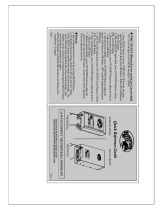
18
ADJUSTING THE GAMMA SETTING
Like most light sources, the manner in
which LED emitters operate means they
exhibit a non-linear response. This means
that to achieve changes in output levels
which look proportional and correct to
the eye (and particularly when filmed), it
is necessary to vary the rate of change at
the lower and upper ends of the dimming
range in comparison to the middle. This
is achieved using an in-built dimming
response curve.
As a high specification fixture, the Dyna
Drum HO provides the option to adjust the
nature of the dimming response curve so
that the emitters (for every color) respond differently for given control input levels. This is
referred to as the Gamma setting. By default, the gamma setting is set to No to produce
a mild and progressive response. If the gamma setting is enabled and increased, from 2.0
through to 2.8, you will notice a higher response to dimming changes, particularly at the
lower end. The graph above simulates the effects upon dimming (applied equally to each
color) of choosing the various gamma setting options.
TO ADJUST THE GAMMA SETTING
1 Enter the user menu (see page 15).
2 Use the or buttons to locate the Gamma option and press ENTER. The current
Gamma setting will be shown.
3 Press ENTER and then use the or buttons to show the required gamma setting.
4 Press ENTER to set the new gamma value.
ADJUSTING THE PWM FREQUENCY
As with most LED fixtures, the Dyna Drum HO dims its emitters by using a technique called
Pulse Width Modulation (PWM). This involves switching the emitters on and off at a high
frequency and then varying the lengths of the respective on and off periods according to
the required dimming level. The frequencies used all lie beyond the ability of the naked eye
to distinguish the on/off transitions, however, some camera systems can detect flickers at
certain frequencies. To solve this potential issue, the Dyna Drum HO allows you to change
the default 1200Hz base PWM frequency to lower, or much higher ones that respond better
to particular camera issues. Options range from 900 to 25,000Hz.
TO ADJUST THE PWM FREQUENCY SETTING
1 Enter the user menu (see page 15).
2 Use the or buttons to locate the Frequency option and press ENTER. The current
PWM base frequency will be shown.
3 Press ENTER and then use the or buttons to show the required frequency.
4 Press ENTER to set the new value.
0
20% 40% 60% 80% 100%
20%
40%
60%
80%
100%
Gamma = 2.8
Gamma = 2.4
Gamma = 2.2
Gamma = 2.0
Gamma = No (default)
Emitter output
Control input
Note: This diagram
is not drawn to scale























